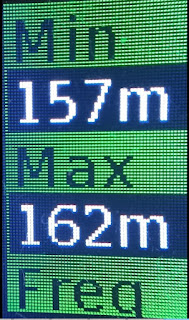ILI9341: Speeding up printing

Printing stuff with the ILI9341 over SPI is a bit slow. After looking into it, the main culprit is the SPI+DMA setup/teardown time, which takes about the same time as the transfer itself for small chunks. So let's add a little cache to buffer writing for a given glyph and do a lot less transactions over SPI. With a 512 bytes cache the result are pretty good : This is the time take to print "0123456789" on the screen in milliseconds, using a GD32F303 @ 72 Mhz. - No spi means we compute the bitmaps , but don't send it over SPI - Spi is the regular code, without cache - Spi/cache is the regular cache with a writing cache Nb: Size 18 font is compressed, size 32 is not, that's why it may seem inconsistent.

